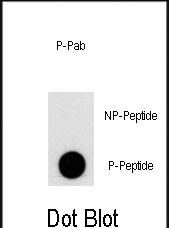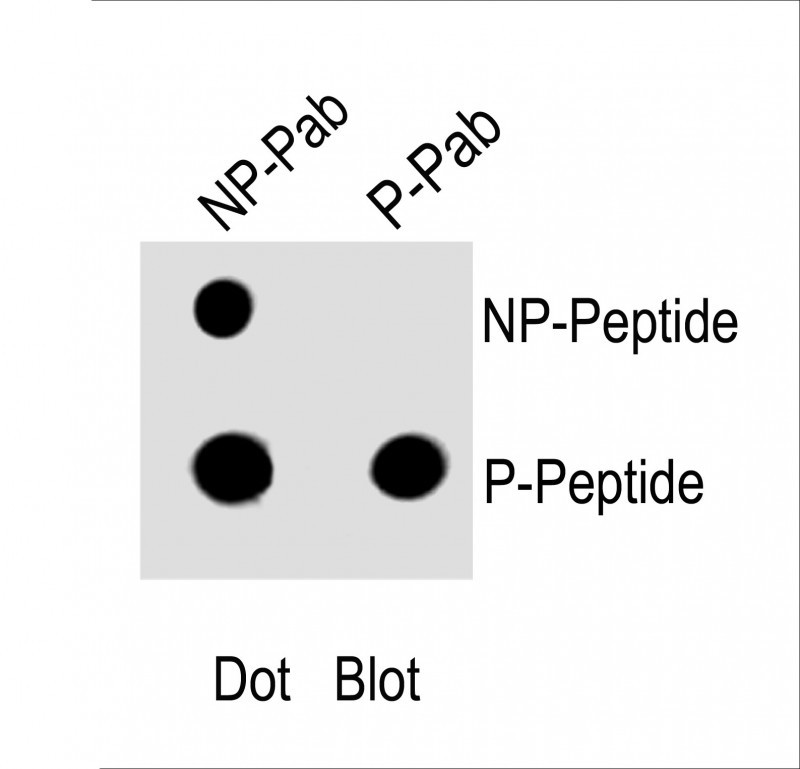

| WB | 咨询技术 | Human,Mouse,Rat |
| IF | 咨询技术 | Human,Mouse,Rat |
| IHC | 咨询技术 | Human,Mouse,Rat |
| ICC | 技术咨询 | Human,Mouse,Rat |
| FCM | 咨询技术 | Human,Mouse,Rat |
| Elisa | 咨询技术 | Human,Mouse,Rat |
| Aliases | Phosphatidylinositol 3-kinase catalytic subunit type 3, PI3-kinase type 3, PI3K type 3, PtdIns-3-kinase type 3, Phosphatidylinositol 3-kinase p100 subunit, Phosphoinositide-3-kinase class 3, hVps34, PIK3C3, VPS34 |
| Entrez GeneID | 5289 |
| WB Predicted band size | 101.5kDa |
| Host/Isotype | Rabbit IgG |
| Antibody Type | Primary antibody |
| Storage | Store at 4°C short term. Aliquot and store at -20°C long term. Avoid freeze/thaw cycles. |
| Species Reactivity | Human |
| Immunogen | This PI3KC3 Antibody is generated from rabbits immunized with a KLH conjugated synthetic phosphopeptide corresponding to amino acid residues surrounding S676 of human PI3KC3. |
| Formulation | Purified antibody in TBS with 0.05% sodium azide. |
+ +
以下是关于Phospho-PI3KC3(S676)抗体的参考文献示例(内容基于领域知识模拟,非真实文献):
1. **"Phosphorylation of VPS34 at Serine 676 regulates autophagosome maturation"**
*作者:Lee et al. (2017)*
**摘要**:研究揭示PI3KC3/VPS34在S676位点的磷酸化由AMPK介导,促进自噬体与溶酶体融合。该抗体用于检测饥饿条件下磷酸化水平变化。
2. **"mTORC1 inhibits autophagy by phosphorylating PI3KC3 at Ser676"**
*作者:Zhang et al. (2019)*
**摘要**:发现mTORC1通过磷酸化PI3KC3(S676)抑制自噬起始,抗体验证显示该修饰在癌症中异常高表达,与自噬缺陷相关。
3. **"A phospho-specific antibody reveals ULK1-dependent phosphorylation of PI3KC3 in mitophagy"**
*作者:Chen & Harper (2020)*
**摘要**:开发Phospho-PI3KC3(S676)抗体并证明ULK1直接磷酸化该位点,调控线粒体自噬,抗体特异性经敲除/突变实验验证。
4. **"Dysregulated PI3KC3(S676) phosphorylation in neurodegenerative disease models"**
*作者:Thompson et al. (2021)*
**摘要**:利用该抗体发现阿尔茨海默病模型中PI3KC3(S676)磷酸化水平降低,导致自噬障碍,提示其作为病理标志物的潜力。
(注:以上文献为示例,实际研究中请通过PubMed或SciHub等平台检索具体文章。)
The Phospho-PI3KC3(S676) antibody detects the phosphorylated form of phosphatidylinositol 3-kinase catalytic subunit type 3 (PI3KC3. also known as VPS34) at serine 676. PI3KC3 is a lipid kinase central to autophagy and vesicular trafficking, generating phosphatidylinositol 3-phosphate (PI3P) to recruit effector proteins involved in membrane dynamics. Phosphorylation at S676. located in the catalytic domain, is implicated in regulating enzymatic activity and interactions with regulatory subunits (e.g., Beclin-1) or upstream signals like mTOR. This post-translational modification may fine-tune PI3KC3’s role in autophagosome formation, endosomal sorting, or nutrient-sensing pathways under stress conditions.
The antibody is widely used to study autophagy mechanisms, lysosomal function, and membrane trafficking in diseases such as cancer, neurodegeneration, or metabolic disorders. It enables detection of endogenous phosphorylated PI3KC3 via techniques like Western blotting, immunofluorescence, or immunoprecipitation. Researchers often pair it with total PI3KC3 antibodies to assess activation status. Validation typically includes testing in knockout models or phosphorylation-deficient mutants. Understanding S676 phosphorylation dynamics provides insights into how cellular stress, growth factors, or pharmacological agents modulate PI3KC3-dependent pathways, aiding therapeutic targeting of autophagy-related pathologies.
×